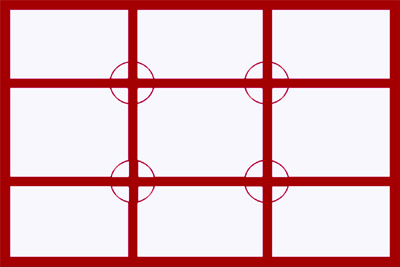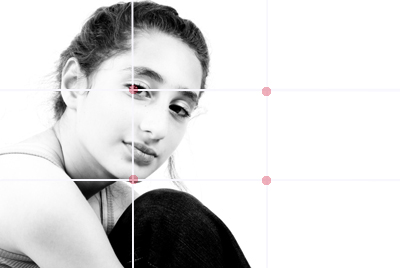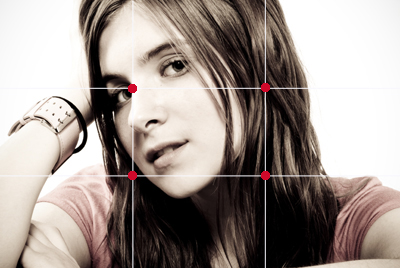The Rule of Thirds Explained
The rule of thirds is a compositional aid used to help photographers and artists arrange the elements of a picture in such a way as to actively engage the attention of the viewer. This method can be very effective in creating a strong focal point in an otherwise bland image. It can be applied to most scenes you may come across, from landscapes to portraits, still life to abstracts.
Very simply, imagine the frame broken down into nine equal parts by two vertical lines and two horizontal lines. Placing the key elements of the image on the intersections of these lines will then increase their impact and provide a natural focal point to the picture.

Placing horizons or other dividing elements on one of the horizontal or vertical lines will lead to the picture appearing more balanced, rather than being overwhelmed by one particular section.

Take for example, a standard portrait of the human face, the first thing people will usually look at is the eyes, think about where the eyes fall, roughly about 1/3rd of the way down and equally spaced. This is usually followed by the mouth, where does the mouth fall, again, about 1/3rd of the way up.

The important thing to remember with compositional rules is that they are meant to be broken. They should be treated as guidelines only and as much can be gained from breaking them as it can by following them.




